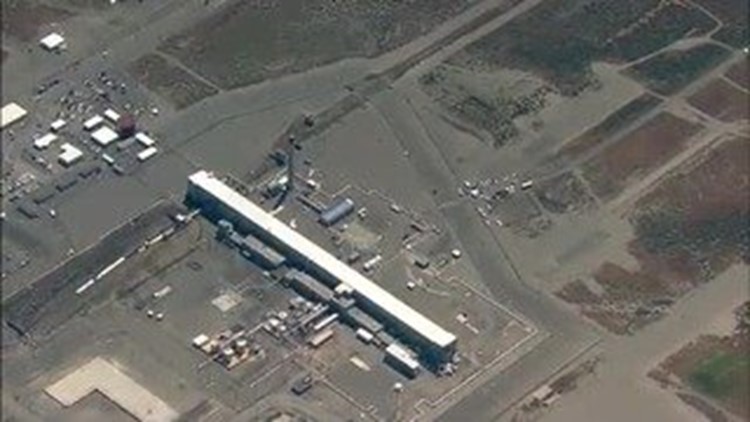Federal authorities on Tuesday evacuated some workers and instructed others to shelter in place after a tunnel cave-in at the Hanford nuclear waste site in Washington state.
So far, radiation dangers and injuries appear to have been averted, but tests and monitoring are continuing, they say.
Soil collapsed over a 20-foot square section of a tunnel housing contaminated material at Hanford — a former nuclear weapons production site in the south-central part of the state, about 45 miles from Yakima.
The collapse was spotted by workers doing routine surveillance.
“This hasn’t happened before,” US Department of Energy spokesman Mark Heeter told CNN. “There are various projects in this site and occasionally there is spread of contamination.”
But never, he said, has there been a tunnel collapse.
Hours after authorities scrambled to respond, authorities determined there is no initial evidence that workers have been exposed to radiation or that there has been an “airborne radiological release.”
“All personnel are accounted for, there are no injuries,” Hanford emergency center spokesman Destry Henderson said. “There is no evidence of a radiological release.”
The accident sparked an alert at 8:26 a.m.
That prompted federal officials to activate an emergency operations center at the breached tunnel — next to the Hanford Site’s Plutonium Uranium Extraction Facility, also known as the PUREX facility.
Robotic equipment
“We don’t know exactly how the soil caved in, it’s too early,” Heeter said. “They will investigate once it is safe for people to go in and see.
Robotic equipment is being used by technicians monitoring and surveying the area.
“There was no earthquake. These tunnels are decades old. It’s possible that at some point the soil above them was going to give in,” Heeter said.
With plutonium, he said, the greatest threat is airborne contamination.
While there was no evidence of contamination, “we have ways to mitigate that if this problem arises,” Heeter said, mentioning heavy-duty paint that traps the contamination and dust suppression.
State and local officials will aid the federal government in its response, Gov. Jay Inslee said.
“This is a serious situation,” he said.
Employees at the PUREX facility were evacuated.
There had been a shelter-in-place directive for 3,000 workers at the entire Hanford Site, but that was lifted for most of the area hours later. It is unclear how many people that includes.
There has not been a shelter-in-place order for people in the nearby counties of Benton and Franklin.
“There is no evidence of a spread of contamination beyond this area,” Heeter said. “It is a very small patch of land in a very large swath of land.”
Heeter said there are eight rail cars inside tunnels at the site that are used to transport radioactive material. He said they would have been contaminated in the 1950s during the production of plutonium.
Hanford history
Since 1989, the government has been in the process of cleaning up the site. The breached tunnel was used to “bury radioactive waste from the production of plutonium,” Inslee said.
“Hanford made more than 20 million pieces of uranium metal fuel for nine nuclear reactors along the Columbia River. Five huge plants in the center of the Hanford Site processed 110,000 tons of fuel from the reactors, discharging an estimated 450 billion gallons of liquids to soil disposal sites and 53 million gallons of radioactive waste to 177 large underground tanks,” the US Department of Energy’s Office of Environmental Management said on its website.
Hanford became a focal point of US nuclear efforts beginning in 1943, when aspects of the Manhattan Project were moved there. Thousands of workers moved into the site where plutonium was produced for use in atomic bombs. Material from the Hanford Site was used in the bomb dropped on Nagasaki, Japan, during the final days of World War II.
The site — about half the size of Rhode Island, in an area centered roughly 75 miles east of Yakima — continued to buzz during the Cold War, with more plutonium production, as well as the construction of several nuclear reactors.
The last reactor shut down in 1987, shortly before the mammoth cleanup effort began.
Four years ago, US inspectors were investigating a possible leak at the Hanford nuclear site after an elevated contamination reading was found in a leak detection pit. Also in that year, six tanks were leaking radioactive waste.



